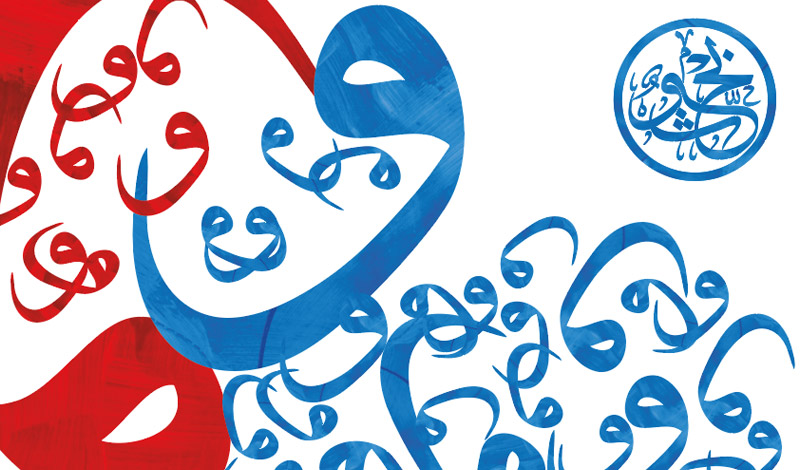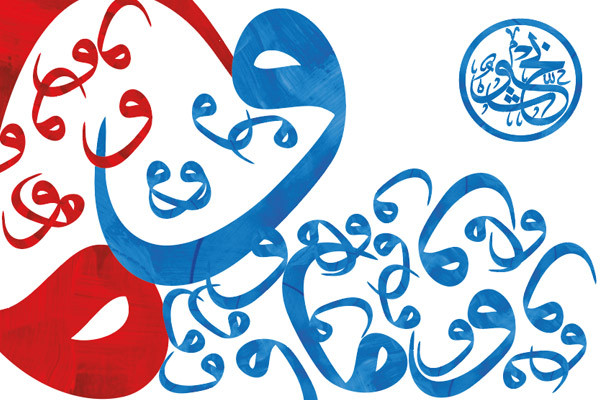Arab Islamic American Summit: a gathering of 55 world leaders
The Summit that took place in Riyadh on 20 -21 May 2017 was the first leg of President Trump’s first international tour as Head of State. Several media commentators had seen this visit as a prelude to a strategic repositioning of long-standing US relations with the GCC and other Arab nations.

- by Lana Abdelhameed ,
- Monday, 22nd May, 2017
The Summit that took place in Riyadh on 20 -21 May 2017 was the first leg of President Trump’s first international tour as Head of State. Several media commentators had seen this visit as a prelude to a strategic repositioning of long-standing US relations with the GCC and other Arab nations.
Reflection over Trump’s speech
Day two of President Trump’s first international state visit started with bilateral meetings with several Arab states, including Egypt and Bahrain.
In the prelude to Trump’s anticipated speech, the majority of broadcast media fixated on identifying the possible issues Trump would discuss based on drafts of his speech. Experts saw the two broad themes that were most likely to make the final speech as follows: Islamist terrorism and uniting in the fight against evil. Both of which were proven correct.
It is interesting to note that expert commentators appearing on American broadcast news networks were very keen to highlight what they see as the US’s role in ensuring the issue of Human Rights, and other concerns regarding equality and governance, are discussed and should be ‘pressured’ by the US. Another interesting comment is the US role in reinforcing Saudi’s efforts to position itself as the custodian of the Islamic world by choosing Riyadh to be the destination to discuss issues pertaining to extremism ideology, adding that the majority of Muslims in the world live outside of Saudi Arabia. However this argument is unlikely to gain credence, due to a general international perception of Saudi Arabia being the custodian of Islam more generally. Extensive coverage of the Shia-Sunni schism was of particular note as well, with attention drawn to the exclusion of Iran in the Summit. Skeptics in the US also called to attention what they described as the ‘hypocrisy’ presented by President Trump in the decision to visit the Muslim World as his first destination, considering the local fight in the US regarding Executive Order 13769 (referred to at times as the ‘Muslim Ban’), and other statements made by Trump during his campaign that are aggressive towards Islam. There was little reference to GCC as a unilateral entity, rather the region overall is referred to as the Arab or Muslim world.
Of significance is the summit conclusion with the agreement for it to be held annually, with the participation of Trump accordingly.
Reviewing Trump’s narrative:
Building consensus on common goal and challenges: By addressing terrorism, Trump aimed to provide a benchmark for a global priority to garner efforts of the US and the Muslim world towards a common goal. Simultaneously, this maintains his campaign rhetoric back in the US with his focus on ‘eradicating terrorism’ by choosing it to be the first issue to address with his international counterparts. In essence, Trump does not deviate from his outlined foreign policy (as vague as it was earlier on). Positioning the fight against terrorism as the fight between good and evil can be seen as an attempt to create a convergence in values. The statement had received the widest media attention and also dials down the issue to a level of basic values that builds the perception of a common framework of global values, that facilitates consensus and synergy in priorities. The narrative had also interestingly not referred to a particular terrorist group to target, which is probably to ensure an inclusive approach that targets the terrorist ideology as opposed to its manifestation (in the form of terrorist groups).
Recognition of Iran as a destabilizing force and supporter of terrorism in the region: this addresses the concerns of the GCC following the nuclear deal (note that there was no reference to the deal in particular). Iran was identified by the US president as a driver of sectarianism and terrorist activity in the region, which is best exemplified in Syria and Hezbollah. Hence, successfully acknowledging the perceived threat posed by Iran and the security priority of the GCC region. It was suggested by Trump that the regional response should be an isolation strategy towards Iran and denying it [Iran] access to funding for terrorism. If this is indicative of a possible US approach towards Iran in terms of the nuclear agreement and sanctions, it remains too vague to determine at this stage. Trump is seen to however make the distinction between political regime of Iran and Iranian citizens, which can be construed to be a pragmatic positioning of his rhetoric towards Iran, while staying true to the message of tolerance in his speech.
No new US strategy towards the GCC identified: the speech does not seem to reveal a diversion away from the Obama administration’s approach towards the middle east. While confirming the sustainability of the US support of GCC (Muslim and Arab nations), Trump is sure to manage expectations of the US role in the future. Burden sharing and encouragement of greater ownership of regional issues is set forth as the condition for the continuation of US support. Trump had placed emphasis on an Arab vision for the region’s future, because ‘the US can’t make that choice’ on behalf of the states. The two elements had often formed the basis of Obama’s narrative towards the GCC. Prevailing perceptions of US shifting away from the GCC as a result of its potential thawing relations with Iran and its Asia pivot had contributed to the perception that the US was practicing a disengagement strategy towards the GCC during the Obama administration. However the strategy could in fact be better described as a focus on encouraging larger ‘burden sharing’ between the US and the GCC. Obama’s team had previously reinforced the US commitment to the region’s security and its longstanding guarantees, with foreign secretary Clinton and with other high level officials’ statements to leaders of the GCC. Trump’s affirmation is not new but does provide a higher level of American confirmation of a no-shift in American alliance with the Gulf states. Hence, the speech does not provide an indication for new strategy towards the GCC or the wider Middle East. Rather, it can be deduced that the speech addresses perceptions of concerns regarding US security commitment to its traditional Gulf allies, and correcting the damage caused by aggressive campaign rhetoric by Trump.
Specific calls to action identified by the US: in line with the defined common goal of addressing terrorism, Trump presented the Muslim nations’ leaders with what can be described as calls to direct action:
Addressing radicalism and ‘driving out the extremists’ from borders.
Encouraging Muslim countries to focus on cutting off access to funding, which is identified by Trump as detrimental in the fight against terrorist groups. The announcement of the Terrorist Financing Targeting Center (a US – Saudi led initiative with the participation of all GCC member states) was positioned as a first step towards this.
Ensure terrorists have ‘no refuge in Arab territory’ – this had referred to military operations that ensure ISIS does not gain ground in countries like Jordan and Lebanon as an example of current efforts.
Calling attention to the loss of human capital in the Middle East caused by the surge of refugee outflow to Europe
Promotion of tolerance and protecting equality, particularly among all three monotheistic religions. Encompasses the reference to protection of persons of Jewish and Christian faith in the Middle East more generally.
Understanding radicalism: with its action-oriented approach to garner consensus on a way forward, the speech did not seem to aim to address the depth of the complexities of radicalism. This can be seen for example in the emphasis on the need to ‘drive out extremism’ through driving out the radical narrative from clerks in mosques. What the speech lacked is reference to the drivers of radicalism and the susceptibility to radicalism accordingly.
American interests: The speech can be seen to target both the Muslim World and an American audience. President Trump’s reference to jobs created and support to industry as a result of the new US arms deal with Saudi the day before the Summit directly addresses media and the audience in the US. Highlighting the 110-billion-dollar investment into the US arms industry reassures Trump’s audience, that had voted based on the populist rhetoric, of his ability to ensure American interests in foreign policy and building bridges with the Arab and Muslim world.

Lana Abdelhameed
Read More
Areas of Expertise
- Innovation Research & management
- Youth empowerment
- Women’s Issues
Education
- MSc Management (innovation pathway), Imperial College London 2011
- BA (Hons) Mass Communication, American University of Sharjah, 2010
Bio
Joining the team in 2012 straight after graduate school, Ms. Abdelhameed enrolled in the mentorship program at b’huth, working closely with the Public Policy Director at the time, Dr. Kenneth Wise.
As part of the mentorship program, Ms. Abdelhameed received a comprehensive education into the world of diplomacy, public policy and international affairs. She worked closely with the strategy team on periodic reports and scenario situation analyses.
Starting off in the Public Policy division, Ms. Abdelhameed has progressed to become the Deputy Director of the Global Affairs Division. Working closely with the division’s director and team based in the UK and US. She works along with the team to contextualize global trends and international affairs for the region, with the objective of identifying opportunities to capitalize on, and threats to mitigate and address proactively.
As an undergraduate student Abdelhameed interned with the Communication and Investor Relations Division at Shuaa Capital, an investment firm based in Dubai International Financial Centre.
Ms. Abdelhameed is also an alumni of the US state department International Visitors Leadership Program (IVLP). The program theme which she undertook explored the role of women in peace and security, with the objective of also reviewing UN Security council resolution 1325.
She continues to hold women issues close to heart.
An Emirati born and raised in the UAE; she lives Dubai with her family.

